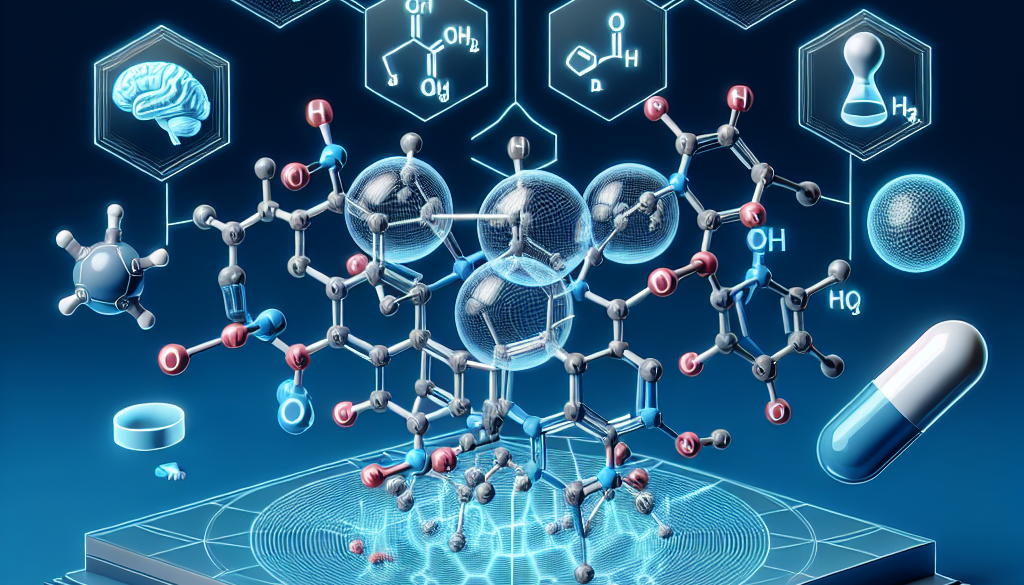Gamma Aminobutyric Acid Analogs and Uses
-
Table of Contents
- Gamma Aminobutyric Acid Analogs: Exploring Their Therapeutic Potential
- Understanding GABA and Its Mechanism of Action
- The Development of GABA Analogs
- Types of GABA Analogs and Their Uses
- Clinical Applications of GABA Analogs
- Advantages and Limitations of GABA Analogs
- Case Studies and Research
- Future Directions
- Conclusion
- Discover High-Quality Proteins with ETprotein
Gamma Aminobutyric Acid Analogs: Exploring Their Therapeutic Potential

Gamma Aminobutyric Acid (GABA) is a naturally occurring neurotransmitter that plays a crucial role in regulating neuronal excitability throughout the nervous system. In the human brain, it acts as an inhibitory neurotransmitter, which means it can reduce the activity of the neurons to which it binds. This simple structure of GABA has inspired the development of a variety of analogs that mimic its action but offer enhanced therapeutic benefits. In this article, we will delve into the world of GABA analogs, exploring their uses, benefits, and the impact they have had on modern medicine.
Understanding GABA and Its Mechanism of Action
GABA is the chief inhibitory neurotransmitter in the mammalian central nervous system. It works by binding to specific receptors in the brain, which are classified into two main types: GABAA and GABAB. GABAA receptors are ionotropic receptors that function as ligand-gated ion channels, while GABAB receptors are metabotropic receptors that work through G-proteins and second messengers. When GABA binds to these receptors, it typically results in a hyperpolarization of the neuron, making it less likely to fire an action potential.
The Development of GABA Analogs
Researchers have developed GABA analogs to target GABA receptors more effectively or to bypass metabolic pathways that may limit the effectiveness of GABA itself. These analogs are designed to either enhance the natural action of GABA or to mimic its effects in the body, leading to potential therapeutic applications.
Types of GABA Analogs and Their Uses
- Gabapentin: Originally developed to treat epilepsy, gabapentin is now widely used to relieve neuropathic pain. It is also prescribed for restless leg syndrome and as an adjunct therapy for partial seizures.
- Pregabalin: Similar to gabapentin, pregabalin is used to treat epilepsy, neuropathic pain, fibromyalgia, and generalized anxiety disorder. It has a higher potency and is absorbed more rapidly than gabapentin.
- Baclofen: This GABAB receptor agonist is primarily used to treat spasticity resulting from disorders such as multiple sclerosis and spinal cord injuries.
- Phenibut: An analog of GABA with an additional phenyl ring, phenibut has both nootropic and anxiolytic properties. It is used in some countries to treat anxiety, insomnia, and various other conditions.
Clinical Applications of GABA Analogs
GABA analogs have found a place in the treatment of a variety of conditions, primarily due to their ability to modulate the nervous system. Here are some of the key therapeutic applications:
- Neuropathic Pain: Gabapentin and pregabalin are effective in the management of chronic pain syndromes, particularly those of neuropathic origin.
- Epilepsy: These analogs can be used as adjunctive therapy for partial seizures, helping to reduce the frequency and severity of episodes.
- Anxiety Disorders: Certain GABA analogs have anxiolytic effects that make them suitable for treating conditions like generalized anxiety disorder.
- Muscle Spasticity: Baclofen is commonly prescribed to alleviate muscle spasticity associated with neurological conditions.
Advantages and Limitations of GABA Analogs
GABA analogs offer several advantages over other therapeutic agents, including a generally favorable side effect profile and a lack of addiction potential. However, they are not without limitations. Some patients may experience side effects such as dizziness, fatigue, and ataxia. Additionally, there is a risk of withdrawal symptoms with abrupt discontinuation, particularly with substances like phenibut.
Case Studies and Research
Extensive research has been conducted to evaluate the efficacy and safety of GABA analogs. For instance, studies have shown that pregabalin is effective in reducing pain and improving sleep in patients with fibromyalgia. Another study highlighted the benefits of gabapentin in the treatment of neuropathic pain resulting from diabetic neuropathy.
Future Directions
The future of GABA analogs looks promising, with ongoing research aimed at developing new compounds with improved efficacy and fewer side effects. The exploration of GABA analogs in various neurological and psychiatric disorders continues to be a fertile ground for scientific discovery.
Conclusion
GABA analogs represent a significant advancement in the field of neuroscience and pharmacology. Their ability to modulate the GABAergic system has made them valuable in treating a range of conditions, from epilepsy to anxiety disorders. While they offer many benefits, it is important to consider their limitations and potential side effects. As research progresses, we can expect to see the development of new and improved GABA analogs that will further enhance our ability to treat complex neurological conditions.
Discover High-Quality Proteins with ETprotein
If you’re looking for premium protein products, ETprotein offers an extensive range of organic bulk vegan proteins and L-(+)-Ergothioneine (EGT) that cater to various industries. Their products are characterized by a neutral taste, non-GMO, allergen-free attributes, and high purity levels, making them an excellent choice for nutraceutical, pharmaceutical, and food and beverage applications. Contact ETprotein to explore their offerings and find the perfect protein solutions for your needs.
About ETprotein:
ETprotein, a reputable protein and L-(+)-Ergothioneine (EGT) Chinese factory manufacturer and supplier, is renowned for producing, stocking, exporting, and delivering the highest quality organic bulk vegan proteins and L-(+)-Ergothioneine. They include Organic rice protein, clear rice protein, pea protein, clear pea protein, watermelon seed protein, pumpkin seed protein, sunflower seed protein, mung bean protein, peanut protein, and L-(+)-Ergothioneine EGT Pharmaceutical grade, L-(+)-Ergothioneine EGT food grade, L-(+)-Ergothioneine EGT cosmetic grade, L-(+)-Ergothioneine EGT reference grade and L-(+)-Ergothioneine EGT standard. Their offerings, characterized by a neutral taste, non-GMO, allergen-free attributes, with L-(+)-Ergothioneine purity over 98%, 99%, cater to a diverse range of industries. They serve nutraceutical, pharmaceutical, cosmeceutical, veterinary, as well as food and beverage finished product distributors, traders, and manufacturers across Europe, USA, Canada, Australia, Thailand, Japan, Korea, Brazil, and Chile, among others.
ETprotein specialization includes exporting and delivering tailor-made protein powder and finished nutritional supplements. Their extensive product range covers sectors like Food and Beverage, Sports Nutrition, Weight Management, Dietary Supplements, Health and Wellness Products, and Infant Formula, ensuring comprehensive solutions to meet all your protein needs.
As a trusted company by leading global food and beverage brands and Fortune 500 companies, ETprotein reinforces China’s reputation in the global arena. For more information or to sample their products, please contact them and email sales(at)ETprotein.com today.














